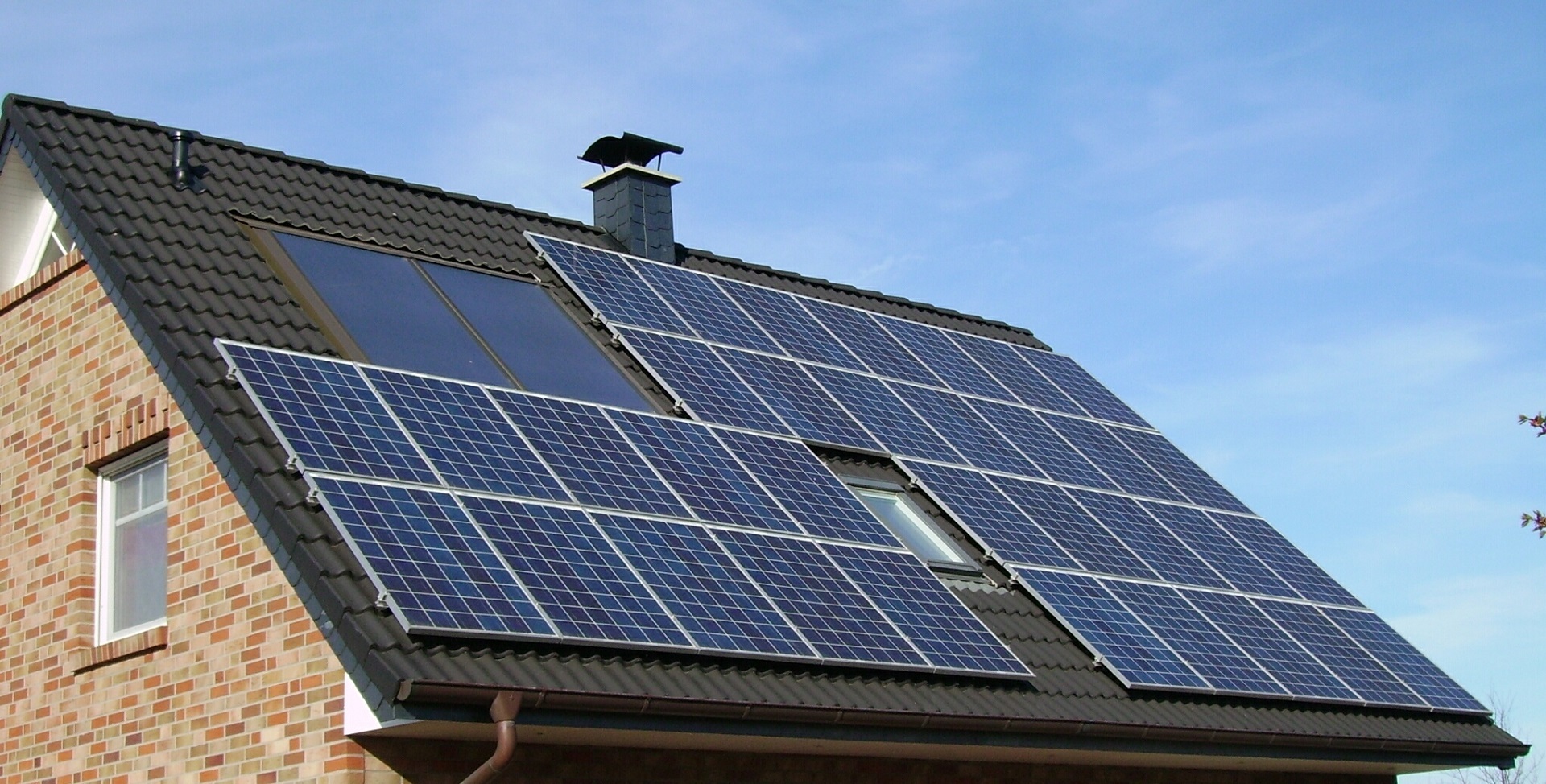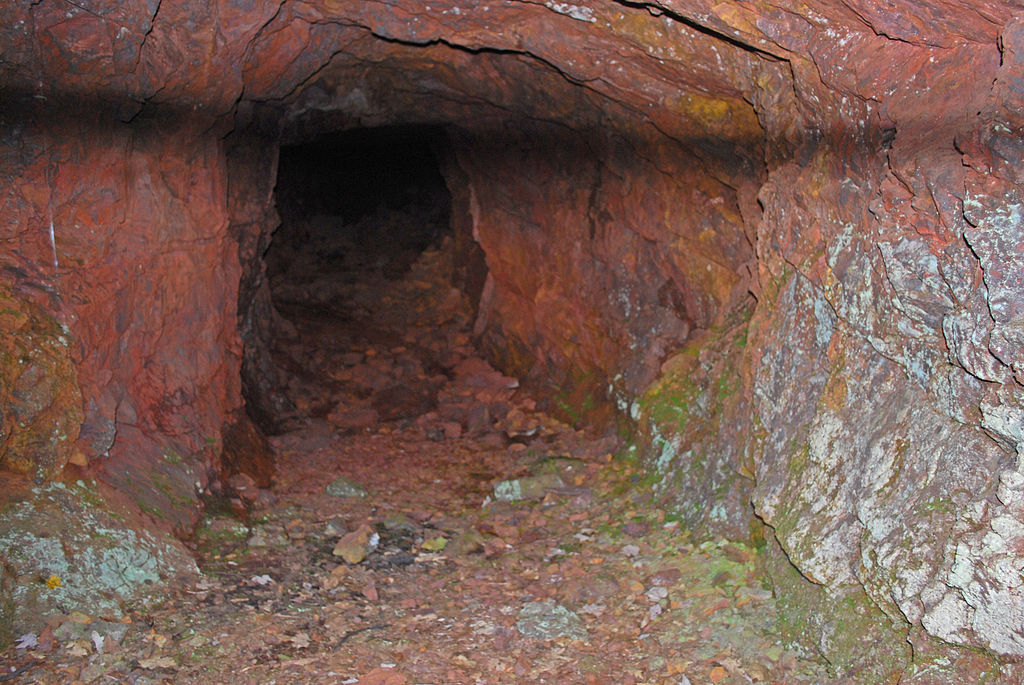
Editor’s note: Some corrections were made in the section on the Sustainability Demonstration House on Jan. 30, 2020.
In the final part of our series exploring Upper Peninsula energy, we turn to proposed alternatives for the UP to meet its energy needs through renewable energy projects. As Enbridge and various local governments continue to push for the pipeline tunnel in the Straits of Mackinac, others argue there are available solutions that would reduce Michigan’s dependency on propane and be environmentally safer for the Great Lakes. Read the first part here and second here.
While the United States and the rest of the globe wrestles with the realities of moving away from fossil fuels and toward renewable energy systems, the debate surrounding Line 5 in the Upper Peninsula presents a unique case study.
In a large geographic area with a low population, state and local actors must find a way to incentivize green energy solutions that can be implemented relatively quickly without costing more than existing energy distribution infrastructure, be it pipelines or otherwise.
Michigan Technological University, based in Houghton, has been a leader in both research and development of alternative energy options.
One of its most recent successes, going on for two years now, is a Sustainability Demonstration House. Formerly the residence of the university’s president, the house was converted into a net-zero emissions housing unit by the Alternative Energy Enterprise, a student-run group at MTU that researches new technologies and methods for renewable energy and sustainability.
Students used 3D modeling of the house to measure heat loss and devise methods to make the building more energy efficient. Built in 1954, the Sustainability Demonstration House models the construction design of many other UP homes that were built during this era, designs that have become a liability as winters become colder year by year. The house was heated through natural gas pipelines, which have been left untouched, but its energy is now predominantly sourced from a solar array.

Solar panels, Photo by unknown via pxhere.com cc 1.0
“People are skeptical about solar energy because they think it wouldn’t work up here due to our climate conditions and our latitude,” said Rose Turner, a graduate student who oversees the design of the house’s solar array. “One of our first objectives with our project was to prove everyone up here wrong that solar energy isn’t a good option.”
Given the UP’s latitude rests so far north, residents hardly see any direct sunlight during the winter. Despite this, the UP is an excellent location for solar panels because of the reflective properties of snow.
“We have our solar panels oriented to be perpendicular to the ground,” Turner said, specifically at an angle of 60 degrees from the horizontal in the winter. “That way we can take the light reflected off the snow and use that to produce energy as well.”
Turner remains proud of the success of the solar array, which has remained operational since the Sustainability Demonstration House project was launched. The house has managed to produce enough energy through renewable means that it could receive credits for excess power sent to the Houghton energy grid via net metering. However, UPPCO, the primary energy distributor in the region, has already met its renewable energy quota as set by the state government, so it does not pay for any further energy put back into the grid.
Houghton has the highest electricity rates in the state of Michigan, in a peninsula infamous for utility rates higher than the United States average. The Sustainability Demonstration House is as much a proof of concept for solar power’s viability in the UP as it is for the cost-saving measures of installing solar panels.
“Once you have the solar array, that’s either going to offset your electricity costs because you’re producing your own energy or else it’s going to completely replace and get rid of your electricity costs,” Turner said. She and the other tenants of the House only pay a few dollars a month for grid energy for the days when it’s particularly cloudy, but have otherwise cut down drastically on utility costs.
“The only costs for switching is the upfront cost (for installation), that $25,000 dollars, but then after that you’re saving so much money on your electricity bill.”
A price tag of $25,000 might seem quite high, but the house is much larger than an average home in the UP, with over 130 light bulbs and at least two refrigerators, and that includes the cost of the house’s battery storage unit. Supplying enough energy to meet demand required a larger solar array, meaning that an average single-family home would pay closer to around $15,000 on average, Turner estimates.
Abandoned mine shafts could serve new purpose
MTU also has been pushing hydropower as a supplemental energy source, taking advantage of the UP’s mining history and the criss-crossing abandoned mine shafts that run underground. A pilot program was launched at the beginning of the year in coordination with the city of Negaunee, a few miles west of Marquette, with a grant from the Alfred P. Sloan Foundation.

Hydroelectric dam cross section, Image courtesy of Tennessee Valley Authority via Wikimedia Commons
Like other cities around the UP’s Keweenaw Peninsula, Negaunee was built around the lucrative iron mining boom of the late 1800s. For this reason, the city liked to refer to itself as Historic Irontown, USA.
However, the rosy view of Negaunee’s mining past belies present-day problems imposed by the left-behind infrastructure.
“Decommissioned mines need to be constantly maintained,” said Roman Sidortsov, an assistant professor of energy policy at MTU and the principal investigator for the pilot program. That kind of economic strain came across as rather wasteful to Sidortsov, who along with his team, is pursuing a new innovation for an old technology.
“The simplified version of thinking about it would be like putting a hydroelectric dam inside of a mine shaft,” said David Nelson, the city planner for Negaunee.

Jackson Mine Negaunee, MI, Photo by Andrew Jameson via wikimedia cc 3.0
The basic principle would be installing a turbine within the mine, using existing water that has accumulated over the years or creating a new underground reservoir. The upper reservoir would be dropped through a pipe called a penstock, which would then pass through the lower reservoir, moving the dam’s turbine in the process. A pump system would lift the water back to the upper reservoir to repeat the process as needed.
“Coupled with that it would be stored energy,” Nelson said. “You would have say a bank of energy storage where, once the city is at peak demand, could be siphoned off from that energy storage.”
“It’s very much a tested technology,” Sidortsov said. “Our innovation comes in the particular application… What we are trying to figure out is how to do it all underground, so you have virtually no impact on the surface.”
Sidortsov and his team intend to publish a preliminary report of their findings in summer 2020. Until then, their study still needs to continue with water testing, working with their engineering team to figure out different applications of the technology and hold more community meetings to ensure there’s local support for such a project down the line.
Implementing such a plan wouldn’t ultimately replace current energy sources, Nelson added, but would act as an energy supplement that would be able to meet peak energy demands during the winter months and limit Negaunee’s need to buy excess energy at a markup.
“For the UP the potential is untapped and it’s I think very intriguing in terms of the types of services that these facilities can produce,” Sidortsov said. “It also mitigates the need for expanding maintaining transmission, you can relieve the strain put on transmission lines because you don’t have to essentially push a great amount of electricity at once if you have the storage.”
Is Line 5 necessary?
With such projects proving viable alternatives to propane dependency, the question remains whether Line 5 is truly as necessary for UP residents as Enbridge claims.
For Jim Lively, director of the Groundwork Center, a Traverse City-based environmental nonprofit, Line 5 has become a benefit solely for Enbridge and Canadian energy markets while posing a major threat to Michigan’s waterways with little economic benefit.
In May 2018, Groundwork Center released a white paper titled “Canadian Profits, Michigan Risk,” laying out the organization’s view that Line 5 is a superfluous part of Michigan’s energy infrastructure.
“With that report specifically we were trying to answer some of the questions that we thought were not being answered,” Lively said.
Namely, that the changes Enbridge has made to its Midwest pipeline network indicate that even without Line 5 both Michigan and the Midwest would meet its oil and natural gas demands. The white paper notes that after Line 6B, now Line 78, ruptured and spilled into the Kalamazoo River in 2010, Enbridge promised to replace around 210 miles of the pipeline.

EPA’s response to the 2010 Enbridge oil spill on Talmadge Creek near the Kalamazoo River, Photo by epa.gov
“What they actually did was more than double the capacity of that pipeline, bringing more than twice as much oil than they used to bring to the Marathon refinery [in Detroit], and that does not get talked about, and then they say that we still need all the oil from Line 5,” Lively said.
Groundwork Center’s report also highlights a change in the flow direction of Line 9. Previously, Line 9 used to bring international oil delivered by tanker into Quebec and Montreal, which would then be sent to Sarnia, Ontario, for refining. With the additional oil coming from Line 78, the flow has flipped, with excess crude transported via Sarnia to Quebec and Montreal for refining there.
“So we essentially can demonstrate very clearly that there’s more oil than there used to be coming through the Great Lakes, we’re just a shortcut, and they’re using Line 5 to have this extra oil move to Montreal and Quebec,” Lively said.
Enbridge sees things differently.
“As long as you’re transporting any liquids, oil and gas liquids, you have to do that safely,” said Ryan Duffy, communications strategist for Enbridge. “So that’s why the tunnel project is important, even if it’s a small amount.”
Enbridge has been making efforts to beef up the security in the area surrounding tunnel, including patrol boats, monitoring anchor positions and inspecting the pipelines for any dents or abrasions.
“Line 5 has not had an incident in the Straits in 65 years,” Duffy said. “The pipelines remain safe and we know that from all the testing we do and the inspections internally and externally, and all the maintenance we do on it.”
Duffy also pointed out that while Enbridge has been investing billions in renewable energy projects, Michigan is still the second highest consumer of propane in the country. For Enbridge and other propane distributors, this trend isn’t expected to end any time soon, reinforcing the necessity of transmission systems like Line 5.
Lively find this an unconvincing argument.
“Trucks and railcars can absolutely transport the propane into the UP, they already do,” he said.
While all this is being deliberated, and several months before the UP Energy Task Force presents the first half of its findings and policy suggestions on March 31, 2020, Enbridge has continued with its Line 5 plans. It recently completed a rock and soil sampling of the Mackinac Straits lakebed, the results of which will be used to help engineers design an underwater tunnel for the Line 5 pipelines and the equipment that will be used for its construction.
Enbridge anticipates the tunnel will be completed around 2024, which would satisfy Enbridge’s regional energy distribution plans and minimize the risk of a Line 5 oil spill by housing the pipes in a tunnel below the lakebed.
Activists like Lively still don’t find this reassuring, and he’s not alone.
Although many county governments in northern Michigan and a few in the Lower Peninsula have signed letters in support of the Line 5 tunnel, every tribal government and close to 70 local governments including Traverse City’s city commission have written resolutions in opposition to the proposed tunnel.
“Why should we have to wait for the tunnel before we remove the risk?” Lively said. “They should be removing the risk now and going through the process to build their tunnel on their own time.”
Read more stories from the Upper Peninsula’s energy situation series
2 Comments
-
Enbridge says it delivers 2600 barrels of natural gas liquids to Rapid RIver on a per day basis from a total volume of 540,000 barrels being shipped to Sarnia Ontario. About 1300 barrels of propane are then stripped out and the remaining ngl product is reinserted for Sarnia delivery. Rapid River supplies about 13,000 of the UP’s 22,000 propane users. London Economics International Study of 2019 found that rail/truck deliveries of propane to Rapid RIver would bump the retail cost by about a nickel a gallon in the retail market. why take any risk at all to our upper great lakes to get western canadian oil to sarnia when only 6% of the daily volume of Line 5 stays in Michigan?
-
>>>>>Namely, that the changes Enbridge has made to its Midwest pipeline network indicate that even without Line 5 both Michigan and the Midwest would meet its oil and natural gas demands.
Line 5 does not carry any natural gas.
This article does not mention that Line 5 supplies the majority of propane used
in the lower peninsula, in addition to what it supplies in the UP.The recommendation that rail or truck be used to transport hydrocarbon
liquids now being transported by Line 5 will increase greenhouse gas emissions
significantly and create safety hazards on the rails and roads here in the Great Lakes region.






